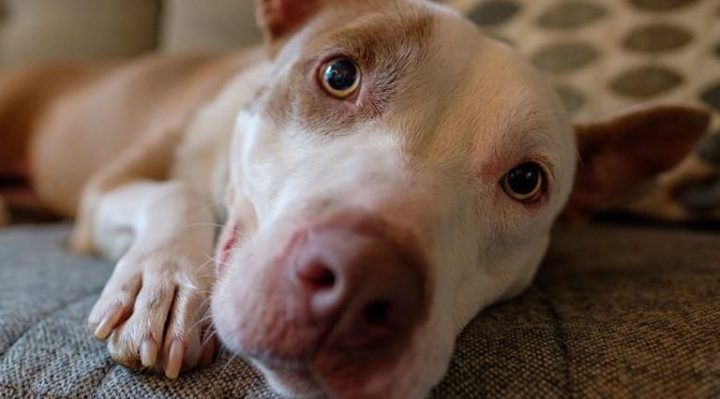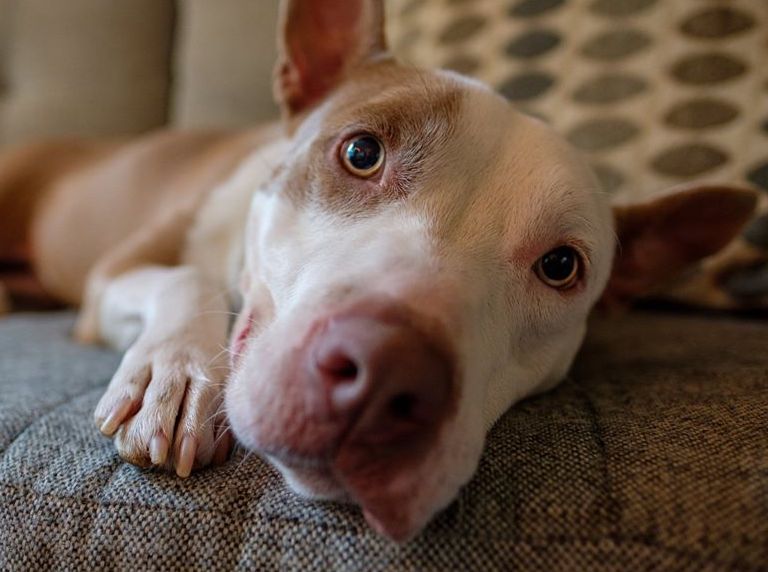
When you’re a young person thinking about your future, you might dream about working with animals some day, and you might wonder if supporting yourself doing something you love is a dream that could come true. You might be told to be more practical: save animals for a hobby; get a “real” job.
You might be surprised: many “real” jobs involve animals. And, while those jobs all require both education and experience, it might not cost a fortune to get what you need to start your career. You’re willing to put in the time and energy? Good! You may be ready to learn from a mentor.
I asked animal professionals and advocates how mentors influenced their careers.
Sarah Rodriguez is a young dog trainer just starting her career. She found a mentor!
Sarah Rodriguez (California) My mentor is Alexandre Rossi. We met at a conference four years ago and at that time I was starting my education to become a dog trainer. He guided me and supported me through the process and was always there to answer any question I had. He spent countless hours helping me and did it all out of the kindness of his heart. We became the best of friends through the entire process and now that I’m a certified dog trainer, we do many projects together—from talks to research projects to building a website. I would not be the trainer I am today if he had not been a part of my journey. I feel incredibly blessed to have had this opportunity to meet and work with such an experienced and knowledgeable trainer, and to be friends with such an incredible person.
Donna Wilson Wolff found her first mentor when she adopted an “untrainable” dog.
Donna Wilson Wolff (Michigan) My first mentor—after I became the fifth owner of a Bouvier in the late 1980s—was Alex Rothacker. After three years of weekly church-basement obedience classes, no one could figure out how to keep the dog under threshold. My dog’s behavior changed so quickly after lessons with Alex, I became obsessed with training and remain so today. Alex is the most patient person I’ve ever met. Sweet Pea, a rescue like all of his dogs, lived to be 20 years old. I live in the Michigan woods with a four-year-old working-line giant Schnauzer and a 15-year-old rat terrier. I’m grateful to friends at Posidog in Columbus, Ohio, for their brilliance and support in our journey in +R Mondioring and so much more, including introducing us to agility through their friend Fanny Gott. Through them, I also discovered the fabulous opportunities for learning online at FDSA, Fenzi Dog Training Academy.
Alicia Graybill had read all the books she could find. Her mentor gave her practical experience.
Alicia Graybill (Nebraska) Shirley Chong is the one I consider my mentor. Prior to the first seminar I ever took with her, I had read literally every training book I could get my hands on. I had a solid base of canine behavior knowledge, but little to no practical experience. Attending her seminars and watching her work with dogs with a wide range of issues provided a lot of that experience. Watching her create out-of-the-box solutions for problem behaviors, hearing her redefine the “issues” in light of real dog behavior (not unreal human expectations), and actually working hands-on with my own dogs and others’—that was the best experience I could ever have. Shirley used positive reinforcement for the most part, but also believed in using unpleasant consequences to discourage unwanted behavior. What was important about the consequences was that they needed to be meaningful to the dog. This did not mean to hurt the dog, but to communicate clearly that the behavior, if performed, would result in something unpleasant. And, really, isn’t clear communication with another species the ultimate goal?

Photo by Steven Cogswell
Kristi Hanson’s avocation is animal rescue. She had an early mentor in her mom!
Kristi Hanson (Louisiana) I’m not a professional, but I have been in animal rescue for years. My first rescue came from the Houston Humane Society when I was five. My mother was a huge influence. She showed in obedience with our Sassafras poodle, Ron-Tu. The kids in our neighborhood would call her “that crazy lady with the dog” because she would do her training in front of our house, going up and down the sidewalk. She was a rescuer, too. As an adult, I have fostered, transported, and done home visits, vet references, and intakes. Debi Davis has influenced me the most as far as training goes. She trained the first papillon service dog. She set the standard high for me and my papillons. She probably doesn’t even know.
Carol McPherson got her first puppy and one week later, she met Ian Dunbar—lucky Carol!
Carol McPherson (Wyoming) Just a week after getting my first puppy in the early 1990s, I was fortunate to meet Ian Dunbar at a pet expo in Honolulu. I loved his presentation and, after he was done, my husband and I escaped with him for a quick beer. I started taking a Sirius Puppy Training class and loved it. Because of that chance meeting with Ian, I ended up teaching Sirius classes in Hawaii until 2000. (Thanks to Wendy Mah, who took me under her wing.) My second mentor was Dr. Ihor Basko, a holistic veterinarian, and one of the most compassionate and brilliant scientists I have ever known. I met Dr. Basko at the Honolulu Pet Expo a year or two later, when I was well established with Sirius. I was fortunate to work alongside him for several years; watching him with animals was incredibly inspiring. After we moved from Honolulu, I decided to go back to school to get a degree in psychology; my main interest was behavioral science. I also minored in nutrition. Now I take only cases that fall into my lap, so to speak. I don’t promote or intend to build a business any more.
Lynn Brezina has learned from both casual and formal mentorships.
Lynn Brezina (Illinois) Myrna Milani. My study with her totally changed me as a dog trainer in almost every way. I am a far better dog trainer because of her. I should also add that I was blessed with a friendship with Ray Coppinger. Between Myrna and Ray, I learned how to think like an ethologist, to study and observe, and, through that process, to learn what an animal does for a living. Ray’s lifelong study was of dogs living in loose relationships with humans, and not selectively bred. Myrna’s focus is the dog/human bond that occurs between people and their pet dogs. My relationships with both Ray and Myrna came late into my work with dogs. With Myrna, I did a mentorship program where we worked on case studies and actual cases from my load of dog-behavior clients. I had to remove my dog-trainer conceptions and look at dog/human relationships more in terms of the bond and less in terms of training operations. I soon realized that people go a long way toward keeping dogs wound up, attention-seeking, and, perhaps, misbehaving. I still teach operations, don’t get me wrong, but I am no longer likely to toss food at behavior problems unless that food is used to teach alternative behaviors.
Michelle Holland credits an organization’s course for enabling her to help rescue dogs.
Michelle Holland (United Kingdom) Lisa Tenzin-Dolma, the ISCP (the International School for Canine Psychology & Behaviour Ltd). The course taught me so much and I will always be truly grateful to them, as it has enabled me to help so many rescue dogs in need. Here is the fabulous website for the course, which I took and qualified in four years ago. I work with any dog in need, including those with aggression issues, but mainly when the owner doesn’t understand what their dog is trying to tell them. I teach them to listen, which is the most important lesson! https://theiscp.com/about-the-iscp/
Colette Kase, who lived in the United Kingdom at the time, found many mentors, and look at all the good that’s been accomplished because of their support!
Colette Kase (Mexico) So many mentors, but I’d have to say Dr. Anne McBride and Clarissa Baldwin. Oh, and Dr. Bruce Fogle. These are the three people who took me under their wings and helped me to become good at what I did in both animal welfare and behavior. I had just started The Hope Project and had somehow talked my way into university when Anne got involved, became part of The Hope Project (the first organization that provided care to pets living with homeless people), and helped me found PATHWAY—Pets and Housing the Way Forward, a multi-organization group endorsed by the Department of the Environment that set the first national guidance for allowing pets in rented accommodation and hostels for homeless people. Anne had started the first-ever puppy socialization class in the U.K. modeled on Dr. Dunbar’s programs (as far as I’m aware), where puppies were accepted from after their first vaccine, collaborating with Dr. Bruce Fogle’s practice. Bruce is, I believe, the most prolific writer ever on dogs, training, and behavior. He was a bit of a maverick, but always on the side of science and a lovely, lovely man. I eventually took over the puppy class and became the behavior consultant to his practice. Clarissa was the remarkable CEO of NCDL, the National Canine Defence League, now called Dogs’ Trust. At the time, there were 14 NCDL rescue centers in England, Wales, Scotland, and Northern Ireland. When I finished university, I didn’t have the resources to continue running The Hope Project, as I needed to get a job. Clarissa brought The Hope Project into NCDL (it’s still being operated by Dogs’ Trust 25 years later) and paid me to run it for them. As my training in behavior evolved, she then employed me to establish the organization’s national dog behavior and welfare program, which, I can proudly say, is also still running.
Next week, more animal professionals talk about their mentors.



